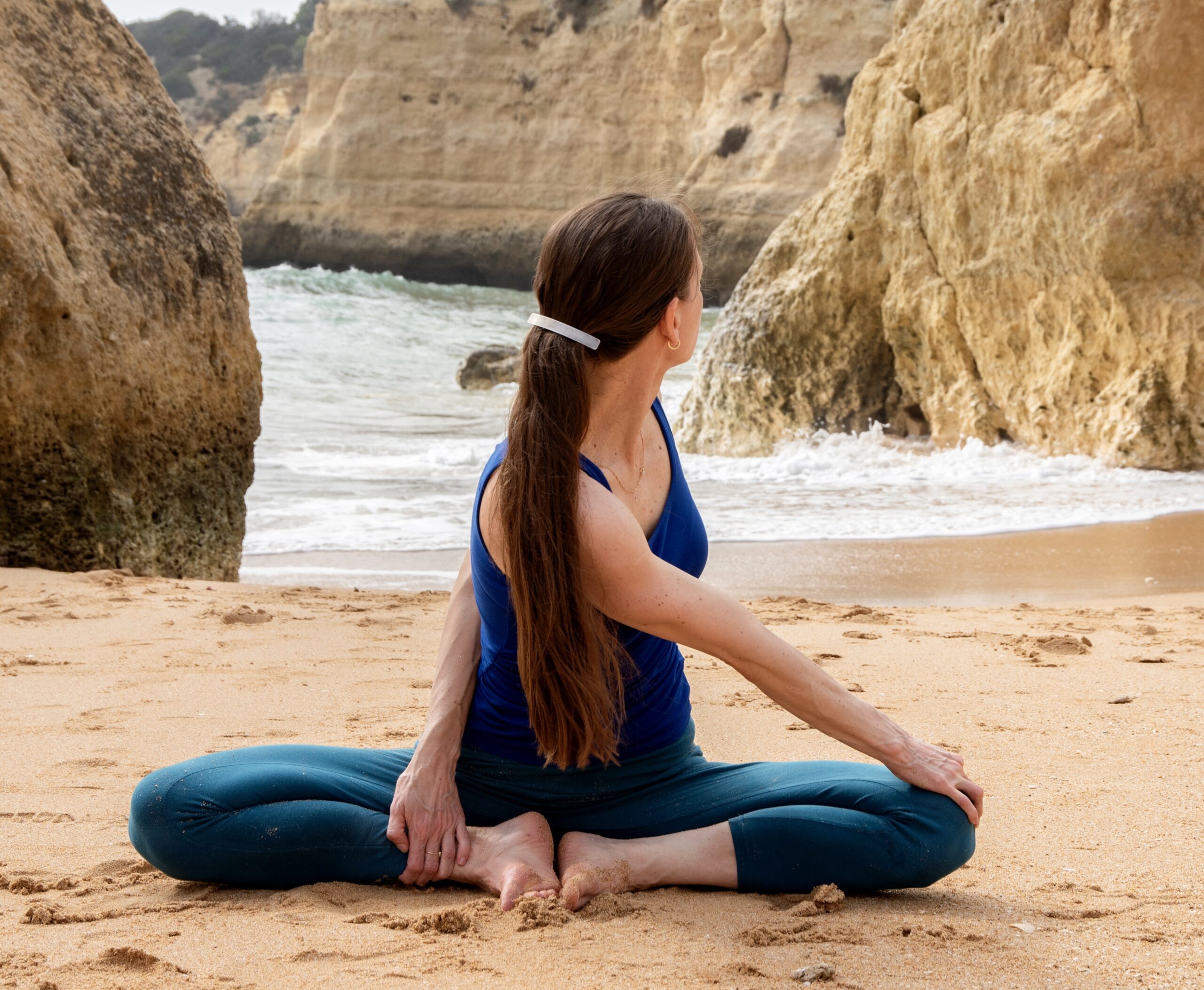
Yoga Nidra - Yogic Sleep
Yoga Nidra is a form of guided meditation that induces deep relaxation, peacefulness, and a state of consciousness between waking and sleeping. It is also known as “yogic sleep” and is said to be equivalent to several hours of restful sleep.
Savasana – Corpse Posture
Yoga Nidra is practiced in savasana, the corpse pose. Lie on the back with the arms down to the sides and the palms of the hands facing up. Allow the legs to roll out to the sides, with the feet a couple of feet apart. Close the eyes gently.
During a typical Yoga Nidra session, you lie down in a relaxed position while you are guided through a series of steps that help you relax the mind and the body. The instructor makes you aware of different parts of the body, the breath, and different sensations you might be experiencing in your body. Using specific techniques like body scans, visualization, and affirmations, the teaches creates a deep sense of relaxation, allowing the body and mind to release any physical, mental, or emotional tension.
By practicing Yoga Nidra, one can experience a sense of profound stillness, calmness, and inner peace. It can help reduce stress and anxiety and promote deep, restful sleep. It can also enhance creativity, concentration, and self-awareness. Additionally, Yoga Nidra is said to be effective in treating various conditions like depression, PTSD, chronic pain, and insomnia. Regular practice can help individuals to become more in tune with themselves, and connect with their innermost selves.
Yoga Nidra can be practiced at the end of asana practice in savasana.
Guided Yoga Nidra:
Yoga nidra is an ancient technique which induces very deep relaxation. Lie on your back in Shavasana with your eyes closed, without a pillow. Relax your arms down to your sides with the palms of your hands facing up. Begin scanning your body and relax each body part in sequential order. Begin with relaxing your right hand, right wrist, right forearm, elbow, upper arm. Relax your right shoulder, right side of the rib cage, right waist, hip, thigh, knee, lower leg, ankle and foot. Then relax the right side of your head and face and the right side of your neck. Relax the entire right side of your body. Then relax your left hand, left wrist, left forearm, left elbow, left upper arm and shoulder. Relax the left side of your rib cage, left waist, left hip, thigh, knee, lower leg, ankle and left foot. Relax the left side of your head, left side of your face and left side of your neck. Relax the entire left side of your body. Relax the entire body and remain in this position and state of relaxation for 5 to 10 minutes. Then begin breathing deeply and stretch into your fingers and toes. Reach your arms above your head and stretch down into your legs. Roll to your right side and push yourself up to sitting.
Sankalpa – Spiritual Affirmation
Sankalpa are integrated into yoga nidra practice. Sankalpas are powerful affirmations, which are infused deeply into the mind during the transcendent state relaxation, which is achieved by yoga nidra. Yoga Nidra affirmations, which lead to spiritual realization. The chosen Sankalpa is repeated three times towards the beginning of a yoga nidra session and toward the end of the yoga nidra session. Two wonderul sankalpas are “I am peacefulness” and “I am love”.
Caroline Klebl integrates yoga nidra and yoga nidra instruction into her yoga teacher training courses and retreats. Join us for an upcoming yoga retreat, yoga workshop or yoga teacher training.
